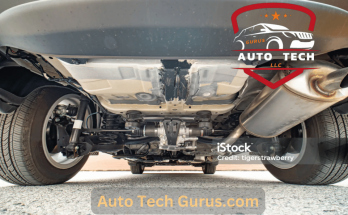Signs That Your Car is All Wheel Drive
Knowing whether your car is all wheel drive can be rather important when assessing its performance characteristics, especially in such conditions as rain, snow, or while driving off-road. The following is a step by step guide on how to determine whether your car has an all-wheel drive:
Understanding Drive train Systems
There are different types of drive train systems: AWD, 4WD, FWD, and RWD. Knowing which type your vehicle has can help you figure out if it’s AWD. For example, 4WD is great for off-roading and is often used in vehicles designed for that purpose. If you have a Jeep for off-roading, it’s likely 4WD, not AWD. If your car is older (made before 1990), it’s probably RWD, which was the most common type back then. This information can help you guess which drive train system your vehicle has, but it’s not a guarantee.”
Check the Owner’s Manual
Your owner’s manual is a great resource to determine if your car has All-Wheel Drive (AWD). Look for the “Features” section, which should list the type of drivetrain system your vehicle has. If you can’t find it there, scan the table of contents and the rest of the manual for sections dedicated to drivetrain information. Some manuals, like the Ford Edge SUV manual, have a specific section on AWD, explaining how it works, safety tips, and its limitations. If your manual has an AWD section, it’s likely your car has AWD, but not always. Some vehicles may offer AWD as an optional feature, so check your manual carefully to confirm if your vehicle is equipped with it.”
Check the Vehicle Identification Number (VIN)
Each car model has an identification number called the Vehicle Identification Number (VIN). This identification number contains all the details of that car model. There are websites like Carfax or National Highway Traffic Safety Administration (NHTSA) VIN lookup, to find out if your car is an AWD. All you need to do is input your VIN number. And the tool will provide information on your car’s drivetrain.
Search for labels and Badges
Some car makers put badges at the rear or on the side of the car, indicating where the AWD is located. For Mercedes-Benz vehicles, the badge may have letters such as “AWD” or “4MATIC” at the rear part of the car, such as the trunk or tailgate. But importantly, Badges can be removed or absent in some models.
Look Under the Vehicle
Another way to identify your car’s drivetrain is by looking at its underbelly. Look for a type that runs the entire length of the driveline, from the front to the rear axle. This is a clear indication of AWD or 4WD, as that component is necessary for sending power to all wheels. If the driveshaft goes only to the front or rear axle, then your car is front-wheel-drive (FWD) or rear-wheel-drive (RWD), respectively.
Check the Dashboard and Center Console
Some vehicles have AWD lights, sensors, or levers in or around the gear selector area. Look around the gear selector area for buttons, knobs, or switches labeled with terms like “AWD,” “Lock,” or anything else that mean similar things. The on/off control is very common in an AWD system, especially for a part-time AWD vehicle.
Look for Resources and Forums Online
There’s no harm in doing some research on the internet. It might happen that sometimes exact facts regarding a car model might be available on some online forum or on the car manufacturer’s website. Usually, detailed discussions are done on certain automotive websites by car enthusiasts on the pros, cons, and features of different models of cars with respect to their drivetrain setups.
Look For Other Clues
“Checking your VIN or looking under your vehicle is the most reliable way to confirm if your car has All-Wheel Drive (AWD). However, there are other indicators to look out for. Next time you start your car, observe the dashboard lights closely. When they illuminate, check for an AWD indicator light, which may appear as “AWD” or an icon featuring two car axles with “LOCK” underneath. If you see this light, it’s likely your vehicle has AWD. Additionally, inspect your center console for an AWD lock button, which allows manual activation of the AWD system for enhanced traction in challenging terrain. This button typically resembles the AWD dashboard light. If you find an AWD button, it’s a good sign your car is equipped with AWD.”
If You Still Doubt, Ask a Mechanic
Professional mechanics can quickly tell if your car is AWD. They have the experience and means to inspect your car and give you the right information.
Conclusion
Knowing if your car is AWD can be crucial; it can make a significant difference in how you drive and, therefore, in how safely you can travel, especially when the weather is nasty. Use these methods to confidently determine your vehicular drivetrain and make the best decisions for your driving needs.
FAQs: How Do I Know If My Car is AWD?
Q1: What is the easiest way to determine if my car is AWD?
The easiest way is to consult your owner’s manual, which contains detailed information about your vehicle, including its drivetrain system.
Q2: Can I use the Vehicle Identification Number (VIN) to check if my car is AWD?
Yes, you can use your car’s VIN to check its drivetrain. Enter the VIN in an online VIN decoder tool like those provided by Carfax or the NHTSA. These tools will provide comprehensive details about your vehicle, including whether it is AWD (FrogWheeler – For a Better Future!).
Q3: Are there exterior signs that indicate my car is AWD?
Many manufacturers place badges on the rear or sides of the vehicle to denote AWD. Look for labels such as “AWD” or specific terms like “4MATIC” for Mercedes-Benz models. However, badges can sometimes be removed or might not be present on all models (Capital One).
Q4: How can I tell if my car is AWD by looking underneath it?
You can look for a driveshaft that runs from the front to the rear axle. This component is necessary to transfer power to all four wheels and indicates that the vehicle is either AWD or 4WD. If the driveshaft only connects to the front or rear axle, the car is likely FWD or RWD (Car Safety & Car Seats Guides) (FrogWheeler – For a Better Future!).
Q5: Are there any indicators inside the car that show it is AWD?
Some cars have dashboard indicators or center console controls for AWD. Look for buttons, knobs, or switches labeled “AWD,” “Lock,” or similar. These controls are used to engage or disengage the AWD system, especially in part-time AWD vehicles (Capital One).
Q6: What should I do if I am still unsure whether my car is AWD?
If you are still unsure, you can consult a professional mechanic. Mechanics have the expertise and tools to inspect your vehicle and determine its drivetrain accurately (FrogWheeler – For a Better Future!).
Q7: How does AWD benefit driving in different conditions?
AWD provides superior traction by distributing power to all four wheels, which is beneficial in poor road conditions such as rain, snow, or ice. It also improves handling and stability on various terrains (Car Safety & Car Seats Guides) (Nissan USA).
Q8: Is there a difference between AWD and 4WD?
Yes, there is a difference. AWD systems distribute power to all wheels as needed, typically for improved on-road handling and traction. 4WD systems, often found in trucks and off-road vehicles, provide power to all four wheels simultaneously and are designed for rough off-road conditions (Nissan USA) (Infiniti USA).



